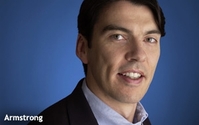Global Ads Help AOL Revs Soar 12%
- by Gavin O'Malley @mp_gavin, November 6, 2014
 Thanks to
the continued success of its automated ads sales business, AOL beat Wall Street’s revenue estimates for the third quarter of the year.
Thanks to
the continued success of its automated ads sales business, AOL beat Wall Street’s revenue estimates for the third quarter of the year. I’m very pleased with the progress at AOL,” CEO Tim Armstong told analysts during an earnings call on Thursday. “This is our seventh consecutive quarter revenue and EBITA growth.”
Year-over-year, the Web giant saw total revenue rise 12% year-over-year, which it attributed to strong growth in global advertising.
Specifically, global advertising and other revenue grew 18% year-over-year reflecting, which was driven primarily by 44% growth in third-party platform revenue, the sale of premium formats and inclusion of revenue from Adap.tv for a full quarter in 2014, versus approximately one month in 2013.
Analysts this week said AOL’s programmatic strategy was clearly paying off. “AOL has successfully turned around its ad business by taking advantage of premium video advertising through Adap.tv and its programmatic buying platform,” said eMarketer analyst Lauren Fisher.
The U.S. programmatic ad market will increase 137.1% to reach $10.06 billion, this year -- and reach $20.41 billion by 2016 -- according to eMarketer.
Within its Brand Group, however, AOL Properties recorded flat display revenue, due to the absence of about $10 million in revenue from disposed and shuttered brands, including Patch. (Excluding these impacts, AOL said display revenue grew 7%, year-over-year.)
Despite the revenue hit, Armstrong appeared to stand by his decision to cut Patch and other underperforming properties. “Today, AOL is leaner, stronger and more focused. That allows us operate more effectively and to execute more meaningful partnerships,” he said on Thursday.
Among other bright spots for AOL Properties, Armstrong noted that HuffingtonPost.com saw native ads grow by 100%, year-over-year, making it a “significant driver of domestic revenue for the property.”
The company also reported 3% growth in AOL Properties search revenue, which it credited to increased queries from search marketing-related efforts.
Overall, adjusted OIBDA grew 2% year-over-year, driven primarily by total revenue growth.
Armstrong on Thursday said AOL is now serving around 220 million consumers, while nearly 50% of its traffic is now mobile. Looking ahead, he added: “We are building AOL to go after the billions of connected consumers and the billion-plus spent annually on media.”


